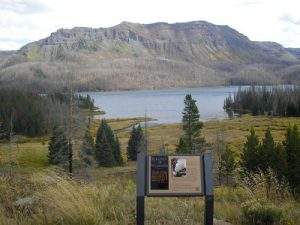The Cradle of Wilderness

In the summer of 1919, the Forest Service dispatched Arthur Carhart, a young landscape architect, to survey Trappers Lake in western Colorado’s Flat Tops—a remote and rugged corner of the state spiked with volcanic cliffs and lush forests. Carhart’s assignment: Plan a new road that would circle the lake and provide access for 100 homes and a marina. After taking in the pristine setting, Carhart couldn’t do it. He returned to his bosses with an entirely different concept. He called for the road to end before the lake and said its shores and woods should be preserved from development. “There are portions of natural scenic beauty which are God-made,” he wrote in a 1919 memo for a forest supervisor, “and…which of a right should be the property of all people.” The plea won over the Forest Service; it made Trappers Lake off-limits to new roads and logging and mining.
The strict protection for Trappers Lake served as a template for what became known as “wilderness.” Carhart’s vision set in motion a four decade–long political battle to officially preserve many of the country’s natural areas that culminated in the creation of the Wilderness Act 50 years ago last month. “Carhart changed the course of how we manage national forests and other public lands,” says Ken Coffin, district ranger for the White River National Forest’s Blanco District, which includes Trappers Lake.
5280 Magazine, October 2014